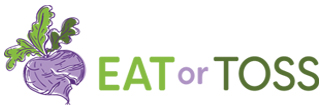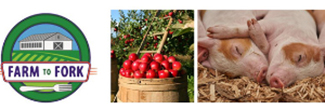Zero Waste Chef Interview
by Anne Marie Bonneau
ZeroWasteChef.com 10-8-2024
Pumpkins for Pigs and Planet
In the US alone, over a billion pounds of uneaten pumpkins end up in landfills after Halloween each year, where, as they decompose, they release methane gas, a greenhouse gas much more potent than carbon dioxide. Jennifer Seifert saw a better way. She founded Pumpkins for Pigs to bring post-Halloween pumpkins to hungry pigs on farms, animal sanctuaries and rescues. I recently chatted with Jennifer about the initiative.
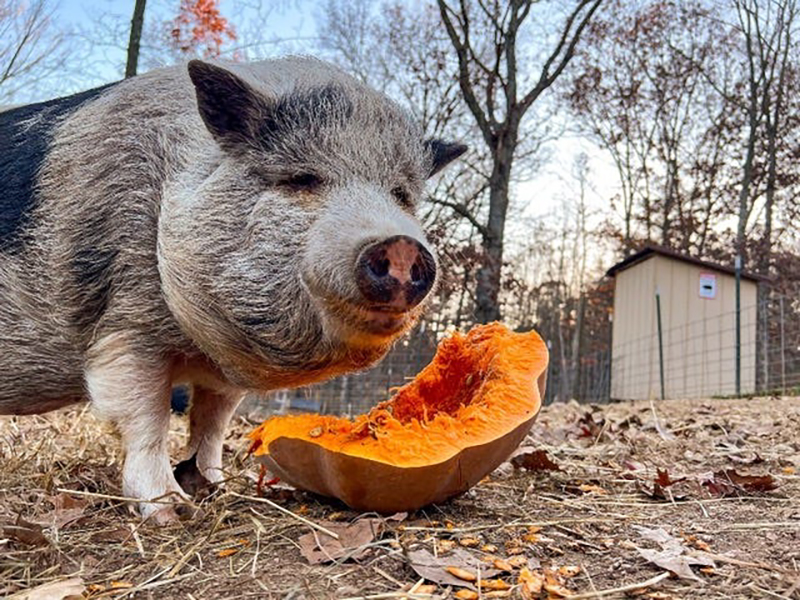
Photo courtesy of Piggins and Banks Pig and Animal Sanctuary
What is the Pumpkins for Pigs’ origin story?
Each year, I would buy pumpkins, and they would still be in great shape when it came time to put a wreath on the door. I kept thinking there had to be a better way. One evening while picking up eggs from our local farmer in the Fall of 2017, I mentioned my growing internal struggle. He invited me to drop off the pumpkins: it would be a nutritious treat for his livestock (pigs, chicken, etc.) and had natural deworming properties which are important that time of year. An idea was born.
I reached out to everyone listed on the local farmers’ market flier and found farms and an animal sanctuary that were willing to try this idea: invite the public to drop off their pumpkins, gourds, and hay bales to farms when they went out to pick out their tree. It worked! Neighbors were willing to add to their already busy schedules to prevent food from going to the landfill. We would not exist if it were not for the Donation Sites taking a chance on this idea or the community making the extra effort: we are so grateful for the ongoing support and action.
What condition do the pumpkins have to be in?
All donations must be free of mold and toxic properties, including non-water-based inks/paints/markers, glitter, gemstones, Clorox baths (a preservation technique), and similar decorations that are not consumable items by anyone and can make an animal very sick. We want to be additive to our Donation Sites’ existing processes, not create more work for them, and we rely on our neighbors’ vigilance in checking and preparing donations. We are looking to partner with composting organizations to give communities other choices for non-viable items. We also welcome creative pumpkin decorating tips that we can share in the Resource section of our website.
What else do you accept besides pumpkins?
Our list of accepted items has grown beyond food based on the requests and needs of Donation Sites. We added evergreen trees when we realized not all communities have curbside pick-up of trees; goats love them, and some locations submerge them in ponds to create aquatic environments for fish. Initially, we did not accept carved pumpkins for feed due to their rapid decay, making them presumably unviable except for compost. Donation Sites asked for them.
I visited a local farm that had a large flock of fowl and learned about their need for the throwaway kiddie pools that are so often left by trash cans come Labor Day weekend when kids go back to school. We added them to our list. We learned some Donation Sites would benefit from the used outdoor plastic playhouses that kids grow out of; it provides more places to climb for goats. We continue to evolve as we find more and more ways to serve our communities.
How do people go about dropping off their pumpkins (and other stuff)?
It’s super easy.
- Go to PumpkinsForPigs.org
- Click on Donate Food
- Search for a Donation Site near you that accepts your items
- Pick/Schedule your visit (each site has their own instructions)
- Drop off your donation and take photos of your impact
- Share your impact on social media to show your community the progress in their neighborhoods
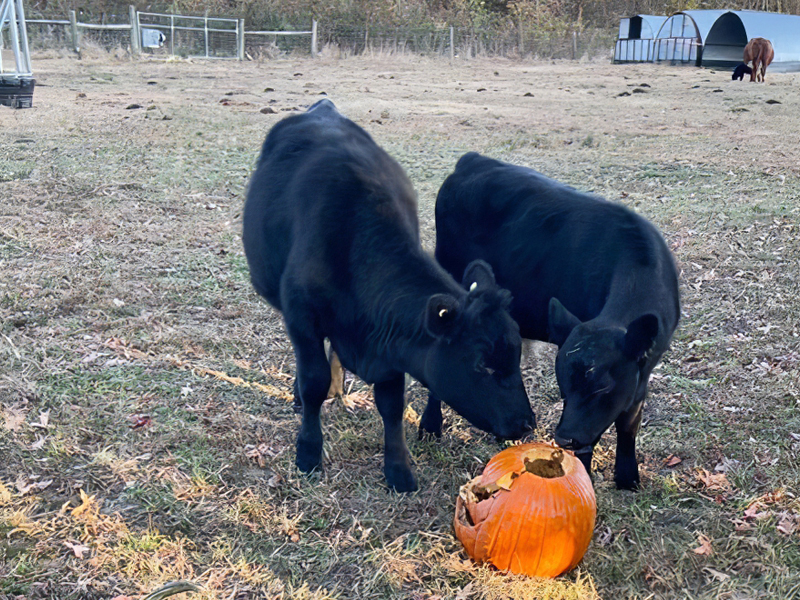
Photo courtesy of Kimes Family Farm Greensboro, NC 2023
How has your organization grown?
PFP has continued to evolve and grow since our inception in 2017. We experienced modest growth of Donation Sites in the first three years, doubling in our fourth year. 2021 was a turning point: we grew 346 percent. In 2022, national media outlets, including National Geographic, NPR, and AP, highlighted our work.
We offer three programs:
Pumpkins For Pigs, aka Fall and Winter Program, is what most know us for—redirecting viable fall and winter decorations back to farms and animal sanctuaries for feed.
During the pandemic, we added a Backyard Excess program to redirect all the amazing produce from backyard gardens to farms and animal sanctuaries for nutritious feed.
Recently, we added a Pantry Extras program where we partner with food banks, pantries, and related organizations to redirect excess but viable food items to Donation Sites.
We have other programs we would like to launch that require more funding and more volunteers to help make them come to fruition.
Could you please share some stats on your impact?
Today, we have 600 locations across 44 states and Canada. During the 2023 Donation season (~ Oct 1 to Jan 31), we
- Added 100+ new donation sites, including our first in Canada
- Diverted 800 tons (1.6 million pounds) of food from landfills
- Prevented 334+ tons of CO2. (the equivalent of the emissions of 72 cars on the road for a year)
How does Pumpkin for Pigs foster community?
Our mission is to reduce food waste one pumpkin at a time. We accomplish this by bringing communities together through donation collections, delivery, and visits to local businesses. By inviting neighbors to visit their local farms and animal sanctuaries, we are not only reducing food waste and making animals happy through nutritious feed but also striving to highlight the numerous local businesses in our communities. In this post-pandemic, technology-driven world, it provides an opportunity for the community to get to know each other again through service and a common goal that benefits all.
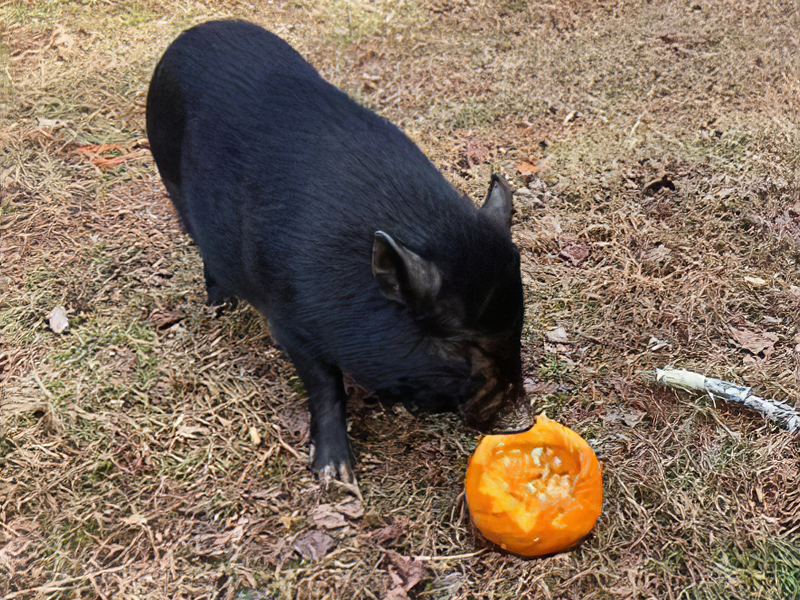
Photo courtesy of Dragonfly Farm in NC
What are your future plans for Pumpkins for Pigs?
We want to deepen our relationships in the communities we serve today and expand to offer those services to more communities. We have other programs we would like to launch that require much more financial support and volunteers to help bring them to fruition. We realize our offerings are well past our namesake 😊.
How can readers support your work?
Spread the Word
- Tell your friends, family, neighbors, HOA, coaches, schools, local businesses
- Visit your local farmers’ markets, let the producers know, and point them to the registration page
- Follow and share our posts on social media: IG and FB
Get Involved
- Donate your pumpkins and other produce
- Coordinate a collection for your neighborhood or organization and post your impact on social media tagging @PumpkinsForPigs
- Sign up to be a volunteer by completing our volunteer form on our website
Donate (Financial)
We are a 501.3c IRS-designed nonprofit that depends on financial donations to exist and operate. Every dollar counts. We accept donations online through PayPal and Venmo, checks, and in-kind donations for the transportation of donation collections from moving companies, junk removers, transportation organizations, and other organizations with trucks and drivers.
Do you have advice for others who want to get involved with an environmental cause dear to them?
Research. Through a quick search online and/or talking to others in your community, you will likely be able to find an organization (or 10) to volunteer with. Education and government entities, including energy and environment commissions and entrepreneurial groups, can be great resources. Community centers and libraries may also be resources.
Start small. Take on only what you can do and do it well. Decide if you like it. Try different groups and activities until you find one that ignites you. If it seems exceptionally hard, listen to that.
If it’s even possible to narrow it down, what has been the most rewarding aspect of founding and running Pumpkins for Pigs?
In addition to our impact, it is the amazing and supportive people I’ve met along the way.
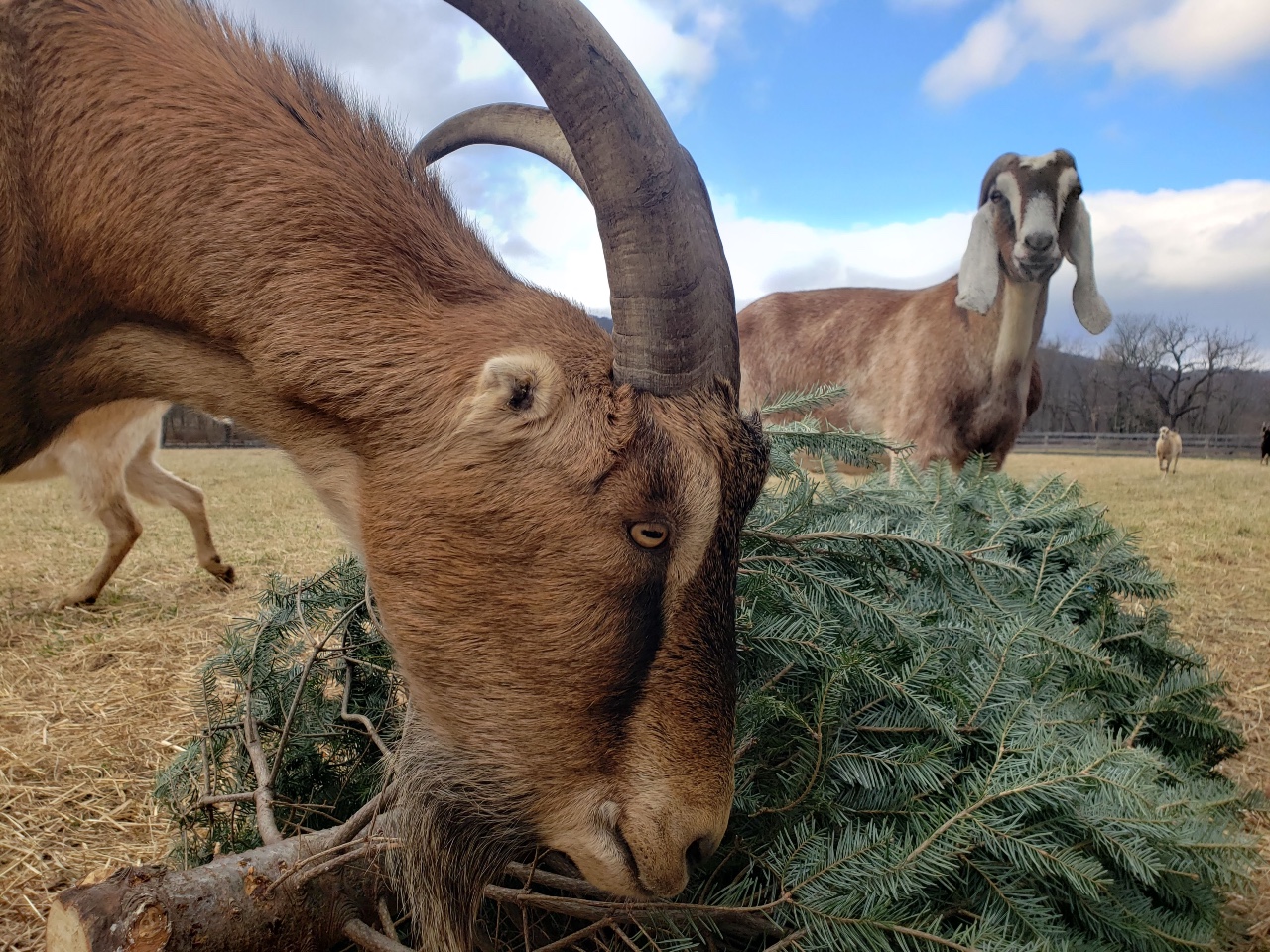
Photo courtesy of 56 Hooves, Loudoun County, Virginia
Once again, go here to search for a donation site for your pumpkins (and more).

Mailing Address
P. O. Box 1096
Leesburg, VA 20177-1096












